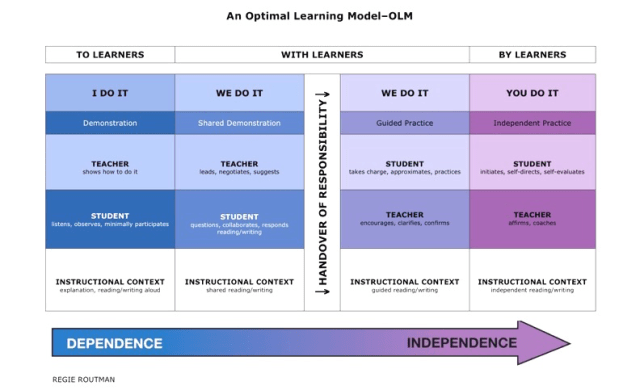
As part of my Learning Action Plan for the 2019-2020 school year, I chose to read 17,000 Classroom Visits Can’t Be Wrong: Strategies That Engage Students, Promote Active Learning, and Boost Achievement by John V. Antonetti and James R. Garver. This is a book that I received by a former administrator with the intent that we would read it as a book study in future years however, I ended moving to another school before that happened.
My initial goal was to present a summary to my staff about the content and how it has impacted my teaching, however, with COVID-19 suspending regular school functions and us moving online, I am adapting my sharing to a more open platform.
The authors of the book have visited 17,000 classrooms across North America, talking with administrators, superintendents, teachers, and students and have shared their research on effective classrooms. They believe that effective education comes from a shift in the classroom from a focus on teaching to a focus on learning. They advocate for backwards design lesson plans and explore various ways that teachers can increase student engagement in their classrooms through various different tasks that shift the focus from the teacher to the learner.
I appreciated the approach to technology in the classroom that was taken by the book. I often feel that teachers are integrating technology for the sake of technology which can lead to students who are proficient at “Googling” the answers, then “copy and paste” to make a Powerpoint presentation but we often fail to design activities that push students towards autonomy, mastery, and finding a purpose for the technology in their task, all three of which have been identified as predictors of high-quality work.
Chapter six discusses student engagement and uses Phillip Schlechty’s Working on the Work to further explore his five levels of engagement: Authentic, Ritual, Passive, Retreatism, and Rebellion. As a teacher reading this section, I could identify each of these levels of engagement in many of my present and past class groupings. They also suggest 8 engaging work qualities that support the development of higher engagement tasks. When these qualities are found in assignments and tasks, students are more likely to engage in learning authentically.
- Personal Response
- Clear/Modeled Expectations
- Emotional/Intellectual Safety
- Learning with Others
- Sense of Audience
- Choice
- Novelty and variety
- Authenticity
Every task does not need to include all of these, however, by integrating these qualities into the learning tasks, the authors found that students were more eager to learn and they engaged deeper and more willingly in the task.
The book ended with a chapter that discusses how we can support our students and colleagues in becoming reflective learners. They use 4R’s of reflective conversations to help guide the reflection we do as learners and believe that reflection is a key stage in their components of an effective professional learning community. They also stated that they believe that teachers spend too much time planning a lesson and that a shift needs to be taken to spending more time designing the learning that takes place in the classroom.
As I read this book, I connected with a lot of the ideas that the authors shared and bookmarked many different models, activities, and ideas that resonated with me as a teacher and reflective learner. I even implemented a few of the ideas into my classroom with various degrees of success. I couldn’t help be keep returning to the same question throughout the book: How do the practices that are described in the book align with the reality of Saskatchewan schools, with small schools, and with ever-changing course loads?
In my 9 years of teaching, I have taught over 30 different courses from grades 4 through 12 and have never had the exact same course load two years in a row. Although the practices described in this book can be implemented in new classrooms and grades, it is sometimes hard to adapt new methods of teaching when you are trying to figure out new curricula and ensure that you are addressing all of the students in your classroom effectively. The authors often describe using grade-alike meetings for teachers to collaborate, something that is not a possibility for small schools where there may be double- or triple-graded classrooms and 3 teachers total in the building. There are ample opportunities with technology to collaborate with other teachers in your division/district, province, and grade-alike groups however I feel that some of the benefits of the collaboration described in the book rely on having common students, or a common understanding of the people behind the names in our classrooms, something that cannot be truly grasped when working with those outside your building.
I feel there needs to be further research and findings for small schools that do not always fit into the demographics of the schools that are used in educational studies. This does not necessarily need to be new, large-scale studies but perhaps a meta-analysis of data, adaptation to small school realities, and an adaptation and implementation framework would provide the guidance that would support teachers in our rural areas to implement these types of strategies and ideas into their classrooms and schools.
Do you feel that the educational studies you have read and use in your professional learning apply to your school reality? Do you have recommendations of articles and books that address our smaller schools?


